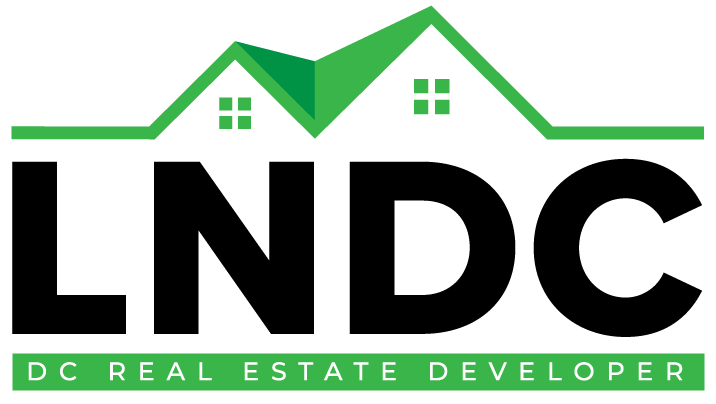Popular Home Layouts for Modern Buyers
When it comes to buying a new home, the layout can make all the difference. Modern buyers are searching for homes that feel open, functional, and adaptable to their daily routines. Whether you are a first-time buyer or upgrading to your forever home, the way a space flows can completely change how you live in it.
If you have been exploring LNDC’s on-market homes, you might notice that most new builds today emphasize comfort, connection, and flexibility. In this guide, we will explore some of the most popular home layouts for modern buyers and why they have become favorites in today’s market.
1. Open-Concept Living: A Space for Connection
One of the most beloved layouts for modern living is the open-concept floor plan. It combines the kitchen, dining, and living areas into a single flowing space. This design helps families stay connected, whether someone is cooking dinner or lounging on the couch.
The open layout also lets in more natural light, making homes feel brighter and larger than they really are. It is perfect for hosting gatherings, watching kids play while preparing meals, or simply enjoying an airy atmosphere.
According to HGTV’s home design trends, open-concept spaces remain popular because they create flexibility in decorating and enhance everyday communication. You can rearrange furniture easily and keep your home feeling fresh without any walls getting in the way.
If you are searching for new homes that showcase this trend, take a look at LNDC’s upcoming properties. Many of these future developments feature wide, open spaces that promote both comfort and togetherness.
2. Functional and Flexible Spaces: Homes That Work Smarter
Modern buyers are also prioritizing homes that work as hard as they do. Functional layouts with multipurpose rooms are increasingly sought after. For instance, a guest room can double as a home office, or a flex space can transform into a gym when needed.
With remote work now a big part of everyday life, a dedicated workspace is no longer optional. Builders are now integrating smart storage, hidden shelving, and built-in desks to maximize every square foot. This focus on practicality does not mean sacrificing beauty, as clever designs make these spaces stylish and efficient.
For design inspiration, you can check out Architectural Digest’s feature on multifunctional homes. It highlights how modern homeowners are blending convenience with personality.
If you want to see homes designed with flexibility and flow in mind, visit LNDC’s homepage. Their portfolio reflects a balance between style and smart use of space.
3. Multi-Generational and Split-Level Living: Space for Everyone
As families grow and lifestyles evolve, multi-generational homes have become one of the most popular home layouts for modern buyers. These layouts often feature private suites or separate living areas for grandparents, adult children, or guests. The goal is to keep loved ones close while still giving everyone privacy.
Split-level homes are also making a quiet comeback. They allow for separate zones within one property, helping define spaces without isolating family members. It is an ideal setup for households that value both connection and independence.
This layout style also opens opportunities for creative use of space, such as basement suites or rental areas that generate extra income. The National Association of Home Builders reports a steady rise in demand for multi-generational designs as more families look for long-term living solutions.
To explore homes that fit this evolving lifestyle, browse through LNDC’s available listings. Many of their designs consider the changing needs of families and include layouts that grow with you.
4. Indoor-Outdoor Harmony: Blending Nature with Comfort
Modern buyers are also drawn to layouts that bring the outdoors in. Large glass doors, covered patios, and extended decks are now integral parts of contemporary home design. This concept creates a seamless connection between indoor comfort and outdoor freedom.
These spaces are perfect for entertaining, relaxing, or enjoying a morning coffee under natural light. According to Better Homes & Gardens, homeowners today value outdoor areas as an extension of their living space. They provide room to breathe, recharge, and connect with nature.
If you are dreaming of a home that lets you enjoy the outdoors without leaving your comfort zone, explore LNDC’s upcoming developments. Many are designed to balance modern elegance with a touch of nature.
Which Layout Suits You Best?
Every homebuyer has different needs. Some want an open floor plan for hosting friends, while others prefer quiet corners for work and relaxation. The best home layout is one that matches your lifestyle, not just the latest design trend.
Builders like LNDC continue to innovate by designing spaces that reflect how people actually live. Whether you need functionality, privacy, or connection, there is a layout waiting that perfectly fits your story.
Start Your Home Journey Today
Finding the right home layout can be exciting and rewarding. Take a moment to browse through LNDC’s on-market homes or sneak a peek at upcoming properties. You might just find the layout that feels made for you.
💬 Contact LNDC today to learn more about available listings and start your journey toward a home that fits your lifestyle.











